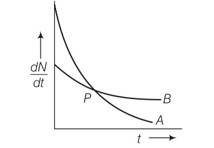Physics NCERT Exemplar Solutions Class 12th Chapter Thirteen
Get insights from 48 questions on Physics NCERT Exemplar Solutions Class 12th Chapter Thirteen, answered by students, alumni, and experts. You may also ask and answer any question you like about Physics NCERT Exemplar Solutions Class 12th Chapter Thirteen
Follow Ask QuestionQuestions
Discussions
Active Users
Followers
New answer posted
6 months agoContributor-Level 10
Within a nucleus, how tightly nucleons are bound is the binding energy per nucleon. If the binding energy per nucleon is higher then it means more stable nuclei. Iron-56 is the most stable as it has one of the highest values. Both the fusion of light nuclei and the fission of heavy nuclei release energy by moving toward higher binding energy per nucleon.
New answer posted
6 months agoContributor-Level 10
The difference between the mass of a nucleus and the sum of the masses of its individual protons and neutrons is known as the mass defect. Mass defect is the key concept in understanding the nuclear stability and energy release in nuclear reactions. The binding energy is converted from the "missing" mass. The binding energy holds the nucleus together.
New answer posted
6 months agoContributor-Level 10
This is a Multiple Choice Questions as classified in NCERT Exemplar
Answer- (c, d)
Explanation- in given figure the slope of curve A is greater than slope B. so decay in A is faster than B . also wavelength of A is grater than B.
New answer posted
6 months agoContributor-Level 10
This is a Multiple Choice Questions as classified in NCERT Exemplar
Answer- (b, d)
Explanation- this is only possible when rate of decay of 1 is almost double the rate of decay of other.so in this case initial decay of A must be twice of B. also Initial rate of decay of B is same as the rate of decay of A at t = 2h and λA < B
New answer posted
6 months agoContributor-Level 10
This is a Multiple Choice Questions as classified in NCERT Exemplar
Answer- (a, b)
Explanation- fusion process are almost impossible at ordinary temperature because nuclei are positive charge and forces between them is of short range.
New answer posted
6 months agoContributor-Level 10
This is a Multiple Choice Questions as classified in NCERT Exemplar
Answer- (b)
Explanation- the moderator used have light nuclei . because when we use heavy nuclei then there will be collision of proton which does not slow down the process.
New answer posted
6 months agoContributor-Level 10
This is a Multiple Choice Questions as classified in NCERT Exemplar
Answer- (b)
Explanation – a nucleus contain more number of neutron than protons because the repulsive force is more if it contain more proton and become more unstable.
New answer posted
6 months agoContributor-Level 10
This is a Multiple Choice Questions as classified in NCERT Exemplar
Answer- (a)
Explanation – tritium contain 1 proton and 2 neutron but when it disintegrates and remove 1 beta particle it will now contain 2 proton and 1 neutron so it will change into 2He3 but its energy will be less from it.
New answer posted
6 months agoContributor-Level 10
This is a Multiple Choice Questions as classified in NCERT Exemplar
Answer –a
Explanation- + decay represents
zXA z-1YA+1eo+v+Q2
Q2= [mn (zXA)-mn (z-1YA)-me]c2
= (Mx-My-2me)c2
- decay represents
zXA z+1YA+-1eo+v+ 1
1= [mn (zXA)-mn (z+1YA)-me]c2
= (Mx-My)c2
New answer posted
6 months agoContributor-Level 10
This is a Multiple Choice Questions as classified in NCERT Exemplar
Answer- (b)
Explanation – because alpha and beta particle have some charge and mass so their energy level will change but in case of gamma particle it does not contain any charge.
Taking an Exam? Selecting a College?
Get authentic answers from experts, students and alumni that you won't find anywhere else
Sign Up on ShikshaOn Shiksha, get access to
- 66k Colleges
- 1.2k Exams
- 680k Reviews
- 1800k Answers

